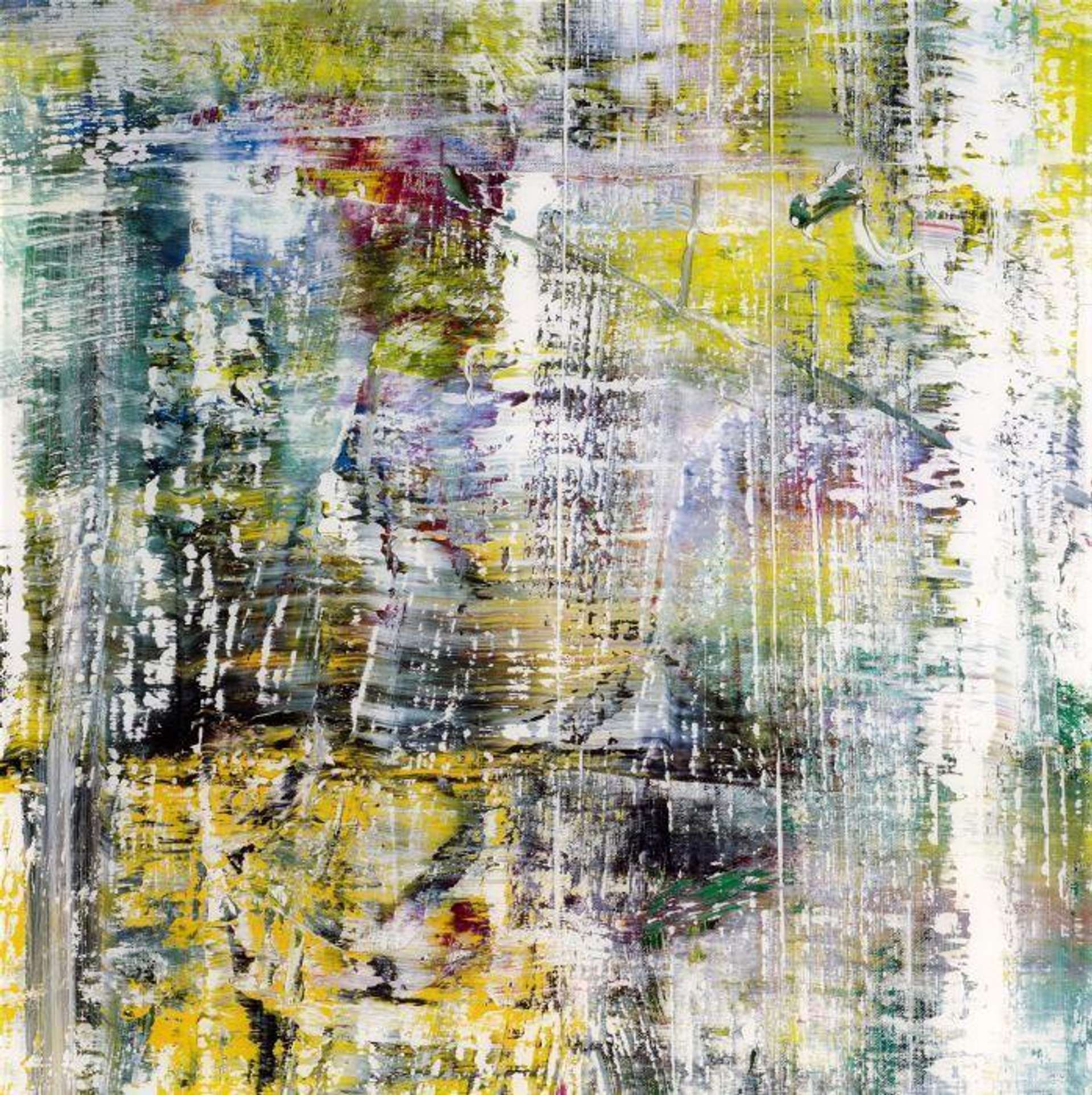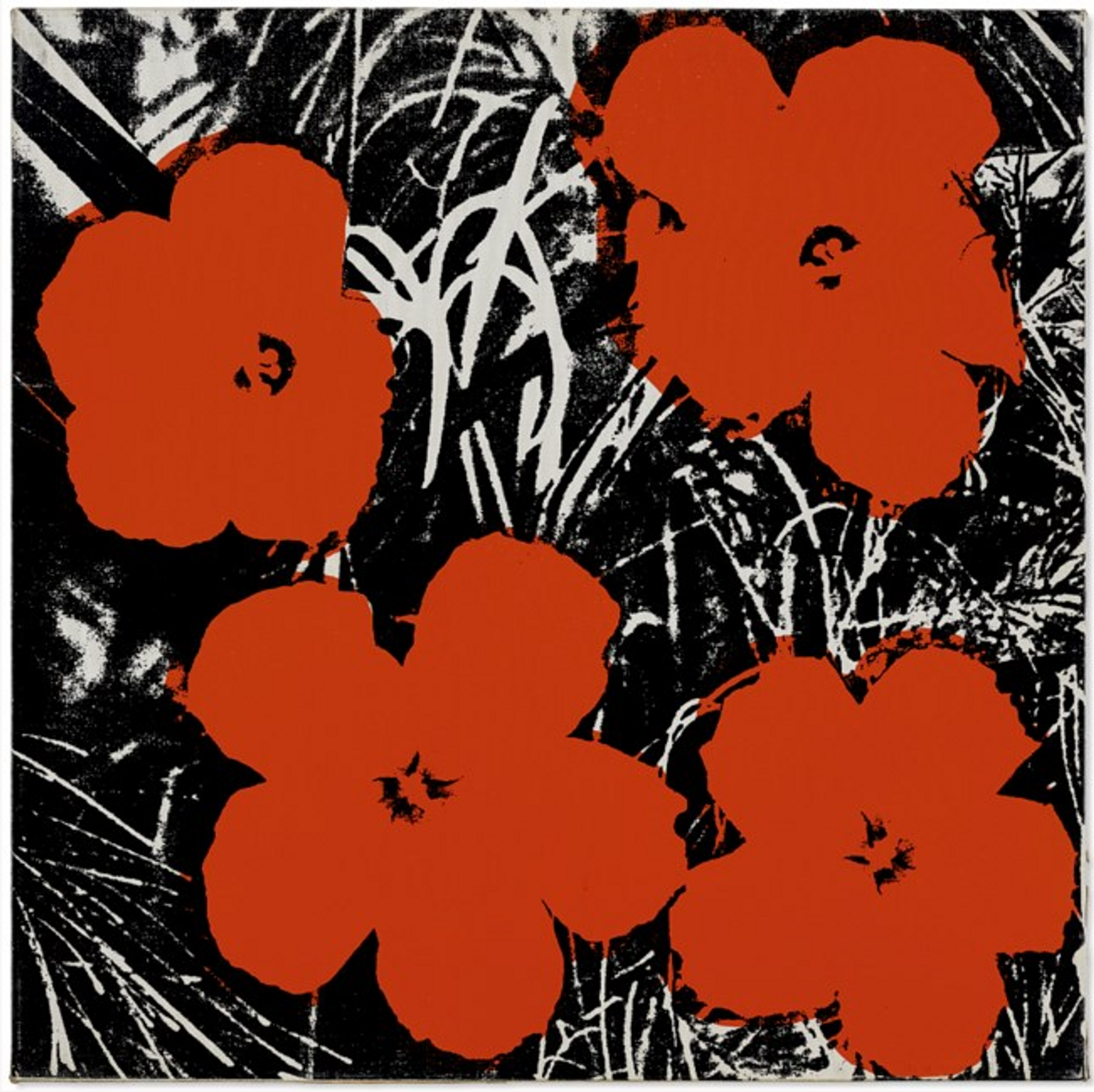 Image © Tate / Strip (921-6) © Gerhard Richter 2011
Image © Tate / Strip (921-6) © Gerhard Richter 2011
Gerhard Richter
142 works
Gerhard Richter, a German artist born in 1932, navigates the realms of abstraction and photorealism, glasswork, and photography, resisting confinement to a singular visual style. With a foundation in the Socialist-Realist style amid a tumultuous upbringing in wartime Dresden, Richter’s defection to West Germany marked a pivotal shift towards a diverse artistic exploration. His early works, inspired by photographic imagery, set the stage for a celebrated career that spans over six decades. Richter's later ventures into abstraction and transparency further underscore his narrative-driven approach, blending storytelling with visual innovation. His contributions to art are recognised globally, solidifying his status as a 20th century icon. Here, we explore his 10 most famous artworks.
 Image © Christie's / Abstraktes Bild (809-1) © Gerhard Richter 1994
Image © Christie's / Abstraktes Bild (809-1) © Gerhard Richter 1994Abstraktes Bild (809-1) (1994)
In Abstraktes Bild (809-1), Richter masterfully navigates colour and texture, employing a squeegee to blend and layer paint, creating a luminous, dynamic surface. This work showcases the artist’s unparalleled skill in generating depth and movement through the interplay of colours, with indigo, white, and magenta flowing across the canvas.
Recognized for his contribution to colour theory, Richter's abstract works secure his legacy as a pivotal colorist in late 20th-century art, drawing admiration for both the visual experience and the technical prowess it embodies.
 Image © The Art Institute of Chicago / Mund © Gerhard Richter 1963
Image © The Art Institute of Chicago / Mund © Gerhard Richter 1963Mund (1963)
Capturing an intimate fragment of Brigitte Bardot's iconic allure, Richter’s oil painting Mund (Mouth) focuses solely on the actress’ lips. This piece by Richter distils the era's fascination with celebrity, sexuality, and the commercialisation of desire, reflecting on the mass culture's impact through a suggestive portrayal. Utilising a blend of photorealism and abstract techniques, Richter blurs the boundaries between the tangible and the intangible, inviting a contemplation on the nature of image consumption and the elusive essence of beauty.
 Image © Christie's / 1024 Farben © Gerhard Richter 1974
Image © Christie's / 1024 Farben © Gerhard Richter 19741024 Farben (1974)
1024 Farben by Richter is a key piece from his Colour Chart series, embodying a systematic exploration of colour relations through a grid of 1024 individually coloured squares. Departing from photographic representation, Richter delves into painting's core components, using a random process for colour placement to achieve a non-figurative effect. Richter's neat arrangement of coloured squares are evocative of paint colour strips found at hardware shops, however the artist has positioned the squares in an ungrouped arrangement.
This work, influenced by Modernist principles and artists like Hans Arp and Piet Mondrian, showcases Richter's engagement with colour theory and the potential of systematic randomness, reflecting a profound investigation into the possibilities of colour and perception in art.
 Image © Christie's / Seestück © Gerhard Richter 1998
Image © Christie's / Seestück © Gerhard Richter 1998Seestück (1998)
In his 1998 painting Seestück (Seascape), Richter employs a technique reminiscent of 19th-century photography, merging two negatives to create a seamless yet subtly disconcerting image where the clouds are inverted. This manipulation challenges our perceptions, blurring the lines between the real and the constructed, and invoking a reflective consideration on the nature of image-making. While aesthetically akin to photographic flatness, the artwork engages with the limits of perception and representation. Nodding to the atmospheric landscapes of German Romanticism, Seestück is reminiscent of Caspar David Friedrich's work.
 Image © Tate / Strip (921-6) © Gerhard Richter 2011
Image © Tate / Strip (921-6) © Gerhard Richter 2011Strip (921-6) (2011)
Strip (921-6) is a digital print by Richter, exemplifying the expansion of the concept of painting in the digital era. This artwork derives from Richter's Abstract Painting, 724-4, a squeegee painting known for its depth and colour.
To create Strip (921-6), Richter digitised Abstract Painting, 724-4. He then dissected and stretched it into thin horizontal strips, laminating the digital prints onto aluminium behind Perspex. This method parallels his Colour Charts series' mathematical processes, showcasing a reinterpretation of his work as source material, challenging traditional textures, and exploring painting's possibilities through digital means.
 Image © Sotheby's / Wolken (Fenster) © Gerhard Richter 1970
Image © Sotheby's / Wolken (Fenster) © Gerhard Richter 1970Wolken (Fenster) (1970)
Wolken (Fenster) (Clouds (Window)) is a monumental painting by Richter, showcasing a cloudscape divided into four panels, creating the illusion of a vast windowed view. This artwork embodies the splendour of dusk skies through a palette of radiant golds, deep azures, and soft ivories.
Richter's mastery in blending photorealism with abstraction is evident as he evokes the awe-inspiring qualities of nature while also engaging in a profound discourse on the complexity of perception and the constructedness of images. Reflecting on German Romantic traditions, Richter transcends conventional image-making, inviting viewers to ponder the realms of reality and fiction.
Betty (1988)
Betty stands as a celebrated example of Richter’s photorealistic technique, capturing his daughter in a moment of introspection as she turns away from the viewer. The work distinguishes itself from traditional photographic representation, emphasising the gap between the immediacy of photography and the contemplative process of painting. This iconic piece skillfully navigates the boundary between image and reality, showcasing Richter's mastery over the medium and his deep engagement with the nuances of visual perception.
 Image © Christie's / Kerze © Gerhard Richter 1982
Image © Christie's / Kerze © Gerhard Richter 1982Kerze (1982)
Richter's 1982 masterpiece Kerze (Candle) illuminates his exploration into the essence and transience of light and life, embodying a meditative contemplation that transcends its simple subject. This work, part of a series that Richter embarked on during a period of intense innovation, represents a significant evolution in his artistic journey.
Through the candle's ephemeral glow, Richter navigates the realms of memory, silence, and the cyclical nature of existence, employing his signature blurred technique to obscure the boundaries between the tangible and the abstract, inviting viewers into a moment of introspection and tranquillity. This painting, celebrated for its technical prowess and profound thematic depth, stands as a testament to Richter's enduring fascination with the interplay of light, shadow, and colour, securing its place among the most iconic works of his oeuvre.
Cologne Cathedral Window
Richter's Cathedral Window, completed in 2007 for Cologne Cathedral, incorporates around 11,500 squares of glass in 72 vibrant colours, carefully arranged both randomly and with intention to resonate with the architectural context.
Inspired by his earlier work 4096 Colours, this piece showcases Richter's innovative fusion of art and architecture. Corinna Belz's documentary, titled Das Kölner Domfenster, sheds light on the creative and collaborative journey behind this project, providing an in-depth exploration of the artist's process and vision.
 Image © Christie's / Venedig (Insel) © Gerhard Richter 1985
Image © Christie's / Venedig (Insel) © Gerhard Richter 1985Venice (1985)
Gerhard Richter's Venedig (Insel) (Venice (Island)) features prominently on his first Catalogue Raisonné cover, heralding its significance. This work, part of a series capturing Venice's essence, melds photorealism with a commentary on the medium of painting. Amidst Richter's exploration between photorealism and abstraction, Venedig (Insel) stands as a photorealistic zenith before evolving into abstraction, illustrating Richter's nuanced dialogue between reality and representation.







